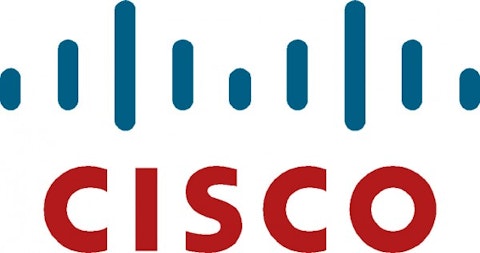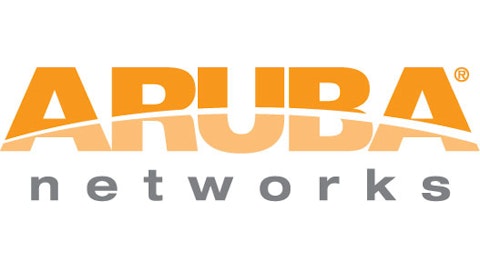With the tech bubble being a distant memory, large tech companies are no longer partying like its 1999. But this does not mean that the glory days are over. For names such as Palo Alto Networks Inc (NYSE:PANW), 2013 signals the beginning. For others, such as Cisco Systems, Inc. (NASDAQ:CSCO), it’s time to rejuvenate. Granted, Cisco is no longer the market darling that it once was. And the company understands this.
The case for $30 per share
However, the network giant also understands that it doesn’t need to be. After years of struggles, Cisco has put together a string of seven consecutive earnings beats. Remarkably, the company still carries a valuation that suggests Wall Street isn’t expecting much. At least not compared to, say, Juniper Networks, Inc. (NYSE:JNPR), which carries a P/E that is five times greater than Cisco’s.

While Leopold was correct in his description, equal evidence suggests that his price target is short by 20%. I believe for several reasons that $30 is equally realistic. For instance, in Cisco’s fiscal Q1 report, profits surged 11%, which helped raise its cash pile to $45 billion.
The company’s cash position is important to note here because quite a bit of my assumptions are based on its free cash flow projections. In that regard, when applying a modest 3% to 4% FCF growth above 2012 levels, it supports a $30 fair market value. Meanwhile, it seems that the market is discounting this metric in favor of top line growth.
Pioneering the era of new deals
However, Cisco appreciates that as well. To that end, Cisco has acquired several companies to help drive the top line. These include paying $141 million in cash for Cariden, another $1.2 billion for Meraki and most recently, the company acquired BroadHop, a provider of next–generation policy control and service management technologyfor carrier networks.
Although the terms of the deal for BroadHop remain unknown, it highlights how Cisco plans to leave no stone unturned to produce the growth investors crave. Essentially, the company is demonstrating how it plans to use its capital in ways that increase shareholder value. Why then did Cisco recently guide for only 3.5% year over year growth? That was a clue.
In my opinion, it means that the company is not be done doing deals since that outlook is below the 6% target that has been a part of Cisco’s long-term plans. Not especially since the cloud market is expected to grow to $177 billion over the next three years. It would be foolish for Cisco not to execute in that direction and look for competitive advantages. But Cisco is well aware of what’s going on. Its Q1 results revealed what has been feared for quite some time.
For instance, Cisco has been struggling to revive its primary routing and switching businesses, an area where it is being outperformed by Juniper. The company realizes that its customers are migrating quicker toward the cloud as evident by its 12% increase in its service revenue. Meanwhile, Cisco’s hardware business has declined sequentially and year over year. Essentially, the company sees the writing on the wall, and it reads “software is the new hardware.”




